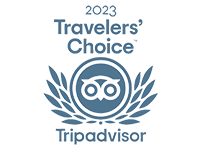TOP 06 Best Places In Yangon, Myanmar - Do Not Miss These
Wednesday, November 01, 2023
Places to visit & things to do

While not serving as Myanmar's capital, Yangon remains to be the nation's commercial hub and a spiritual focal point. Whether you find yourself wandering through the bustling markets, savoring beer and barbecue delights in Chinatown or embarking on an eye-opening journey aboard a commuter train, Yangon's streets offer a dynamic and immersive initiation into the essence of the country. Here, Autour Asia will introduce you to the top 06 best places in Yangon that you simply cannot afford to miss.
Table of Contents
1. Bogyoke Aung San Market
- Address: Bogyoke Aung San Road, Pabedan Township, Yangon, Myanmar.
- Opening hours: 9:00am - 5:30pm (except closed Mondays and Public holidays)
- Google Maps: https://maps.app.goo.gl/Skp27vhMYX4XX9gP8
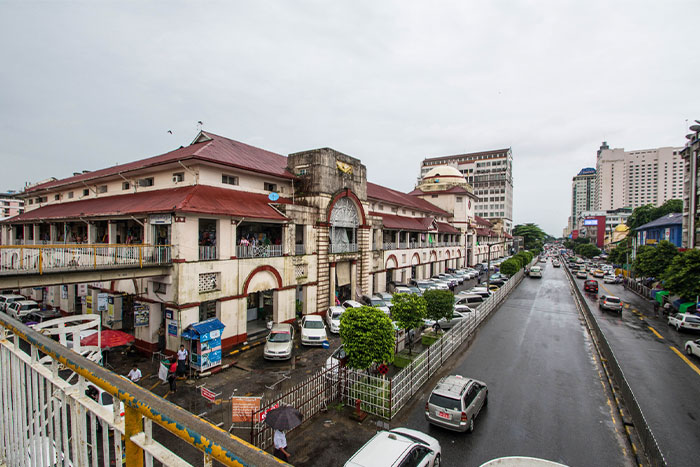
Established in 1926 and formerly known as the Scott Market during colonial times, this place to see in Yangon underwent a significant transformation in 1948 when it was rechristened as Bogyoke Aung San Market. It is one of the largest markets in Myanmar. This market is not just a commercial hub; it's a place where the vibrant Thingyan festival, also referred to as Zay Thingyan or the Water Festival, takes center stage. Come to this festival typically celebrated on April 11 or 12, you can see children arriving at the market bedecked in festive attire, while the market's shops offer traditional delights like Mont Lone Yay Paw, Thargu, and Shwe Yin Aye. A visit to soak in this atmosphere is well worth it, and haggling is the norm if you decide to make a purchase. Recently, Bogyoke has garnered immense popularity among tourists, and this newfound acclaim is reflected in the prices.
With more than 2,000 stalls, the historic Bogyoke Aung San market is a place to visit in Yangon for catering to a diverse range of shopping needs. This marketplace can offer the best souvenirs in Myanmar for you to peruse and select from. Within the bustling confines of this covered market, you'll find a mix of treasures, ranging from exquisite gold jewelry to traditional textiles, ornate antiques to imitation clothing labels, fresh fruits to meticulously crafted local lacquerware, puppets, and various handicrafts. In addition to fashionable attire and accessories, the market also beckons those searching for precious items such as Burmese rubies, pearl stones, and world-renowned pearls of the highest quality. However, it's essential to note that when purchasing rare, ancient artifacts or other high-value items, tourists should ensure they acquire goods from shops that provide legal invoices to avoid complications at customs offices.
2. Chinatown (Tayoke Tan)
- Address: Chinatown of Yangon, Yangon, Myanmar (Burma)
- Opening hours: 24 hours (Depending on different shops)
- Google Maps: https://maps.app.goo.gl/U4gjaPjhWg9vQ8QK7

Vibrant, diverse, and pulsating with activity, this locale is a place to see in Yangon, firmly establishing itself as a renowned destination. Locally known as "Tayoke Tan," Yangon's Chinatown may appear as a small rectangle on the map, but it packs an abundance of life within its bustling streets. This is the ultimate destination for indulging in street food in Yangon. It offers al fresco dining, a lively local atmosphere, and a vibrant nightlife scene. Undoubtedly, the most renowned stretch of Chinatown is 19th Street, affectionately dubbed "Barbecue Street." Here, roadside food stalls dish out steaming culinary delights, snacks, fresh fruits, and sizzling fries, captivating both locals and foreigners alike. Amidst this culinary extravaganza, two historic gems - the Keng Hock Keong and Guang Dong Kwan Yin Temple, stand as some of the oldest and most culturally significant religious sites for Chinese Buddhists in Yangon.
A significant portion of the Chinese population resides in this distinct quarter, effectively constituting a community of their own. This area is a flourishing hub of commerce, evolving into a tourist attraction in its own right. Here, you'll encounter numerous Chinese residents, affording you the opportunity to engage in enlightening conversations about their craftsmanship, the enduring Chinese heritage in Yangon, and the lively spirit that characterizes this bustling neighborhood. During the Chinese New Year festivities, this part of the city bursts with vibrant life, adorned with a sea of red decorations that adorn every corner. A leisurely stroll through the labyrinthine streets of Chinatown promises an enchanting and immersive experience. For an authentic taste of Chinatown's exuberance, it is advisable to explore it during the evening hours, when the streets come alive with bustling markets and a convivial atmosphere.
3. National Races Village
- Address: Thanlyin Bridge. Thaketa Township, Myanmar, Yangon, Myanmar
- Entrance ticket price: 3 USD/ pax
- Opening hours: 7:00 a.m - 5:30 p.m
- Tel: 01-547055
- Google Maps: https://maps.app.goo.gl/p65i6dhKmCSNxzZv7
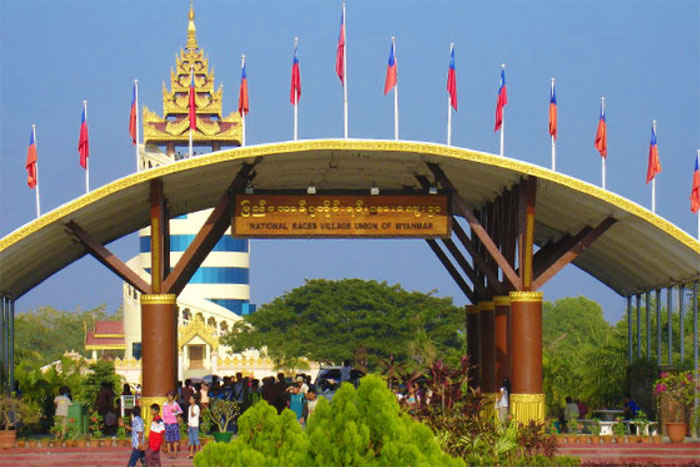
Within this village, you'll discover eight distinct traditional houses, each representing the unique customs, attire, cultures, music, literature, and more of Myanmar's various national races. A visit to these traditional houses provides a window into their respective customs and architectural styles, enriched with decorative handicrafts. Some houses even feature individuals dressed in their traditional clothing, allowing you to appreciate the diversity in dress styles. The village also boasts several notable attractions, including the Nan Myint Tower (Watch Tower), a Crocodile Farm, and a Bird Sanctuary. Additionally, you'll find small-scale replicas of revered pagodas like the Htokekhanthein Pagoda and the Kyaiktiyo Pagoda. Within this expansive complex, you'll have the opportunity to immerse yourself in the splendor of well-maintained gardens, lakes, mangrove groves, and a tranquil river. Additionally, you'll find finely crafted miniature replicas of several significant pagodas.
To admire the panoramic view of the village, consider ascending the full-scale replica of Bagan's Nan Myint Tower, situated at the village's front. From this vantage point, you can revel in the stunning views of the surroundings. A visit to this village is a truly rewarding experience, and it's a destination where you can easily spend an entire day. To explore the extensive village grounds, consider renting a bike, especially given the ample space it covers. Furthermore, this village hosts timely festivals dedicated to Myanmar's national races. During these festivals, you can witness the splendor of the various nationalities and their vibrant traditional dances. Occasionally, you may even chance upon a genuine traditional wedding ceremony, not staged for tourist viewing but a real celebration of love.
4. Karaweik Hall
- Address: Kandawgyi Lake Compound, Yangon, Myanmar
- Entrance ticket price: 0.50 USD
- Opening hours: 10:00 am - 10:00 pm
- Tel: +95 9 45922 2222
- Google Map: https://maps.app.goo.gl/8nRvjwmzN4qRB4HJA
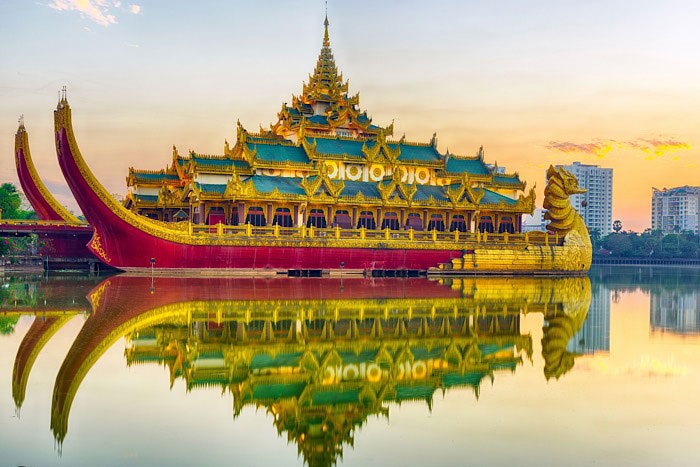
Karaweik Hall, also known as the Karaweik Palace, stands as one of the best places in Yangon . Its design draws inspiration from the architectural grandeur of the Pyi Gyi Mon Royal Barge, a vessel of great significance in the history of ancient Burmese rulers. This splendid hall came into existence in 1974, showcasing a concrete structure resembling two colossal golden birds, complete with Pyatthat-style roofs. The spacious interior of the palace takes on the shape of a ship, meticulously fashioned to emulate the Karaweik, a mythological bird of lore. Situated on the eastern bank of Kandawgyi Lake, Karaweik Hall presents an awe-inspiring spectacle, bearing a striking resemblance to the Pyigyimon royal barge. The visionary behind this architectural gem is U Ngwe Hlaing, and though relatively new, having been completed in 1974, it has rapidly ascended to iconic status.
Karaweik Hall is a two-story edifice. The exterior of Karaweik Hall is adorned with two golden orbs suspended at the ends of the Karaweik birds, while the arch structure's rear showcases vibrant red and yellow hues. The hall's interior is a treasure trove of amenities, featuring a meeting room, a reception area, a theater, and a buffet restaurant replete with a diverse array of culinary delights and beverages representing various countries.Visitors can explore its ornate interiors and savor a delectable meal, as the hall now has a restaurant offering sumptuous buffet spreads. As night descends, guests can be captivated by the enchanting Royal Culture Show, an enthralling display of Myanmar's rich heritage. Beyond this, a multitude of engaging activities await visitors, including exhibitions of traditional Myanmar handicrafts, Burmese art, and traditional costumes. For those seeking a romantic space steeped in music and art, Karaweik Hall is an absolute must-visit.
5. Sule Pagoda - Top best places to see in Yangon
- Address: Bogyoke Aung San Road, Pabedan township, Yangon, Myanmar
- Entrance ticket price: 3 USD
- Opening hours: 6:00 a.m. - 10:00 p.m
- Google Maps: https://goo.gl/maps/1Y3m7D2T6aS7YUyq9

As a famous place in Yangon, the Sule Pagoda stands as a luminous gem amidst the urban landscape. Standing tall at 48 meters, the Sule Pagoda leaves an indelible impression on onlookers with its resplendent gold-plated dome and a pinnacle adorned in gleaming gold. The temple boasts a distinctive architectural style, characterized by its octagonal shape extending to the summit. The intricate craftsmanship on the temple is a testament to the artistry involved, embellished with ten bronze bells and an array of other sacred Buddhist artifacts. Notably, the temple houses four prominent towers bearing large marble footprints, which, according to legend, are imprints of Buddha Shakyamuni from his pilgrimage to the temple, lavishly adorned with gilded leaves. Within the temple's hallowed confines, eight Buddha statues symbolize the seven days of the week, with the special inclusion of two Buddha statues representing Wednesday, the day associated with Buddha himself.
Around the Sule Pagoda, you'll encounter an array of small shops offering souvenirs. Furthermore, the area is replete with various services, including astrologists, palmists, ....For an enhanced experience, we recommend scheduling your visit during the serene hours of sunrise or sunset. Particularly at night, this iconic structure exudes a captivating blend of mystery and grandeur that beckons every traveler to explore its magnificence The Sule Pagoda enjoys immense popularity among both tourists and locals, resulting in bustling crowds during the day, compounded by the perpetual flow of traffic around its periphery. Visiting this temple at these quieter times will grant you a more tranquil visit and offer ideal lighting conditions for capturing the perfect photographs. Much like the Golden Shwedagon Pagoda, visitors can pay homage to the Buddha statue aligned with their birthday of the week and offer prayers for good health, fortune, and prosperity.
6. Taukkyan War Cemetery
- Address: Yangon - Pyay Road, Yangon, Myanmar
- Opening hours: 8:00 a.m - 4:00 p.m
- Google Map: https://maps.app.goo.gl/R8UmxGG8rT3WNDF46
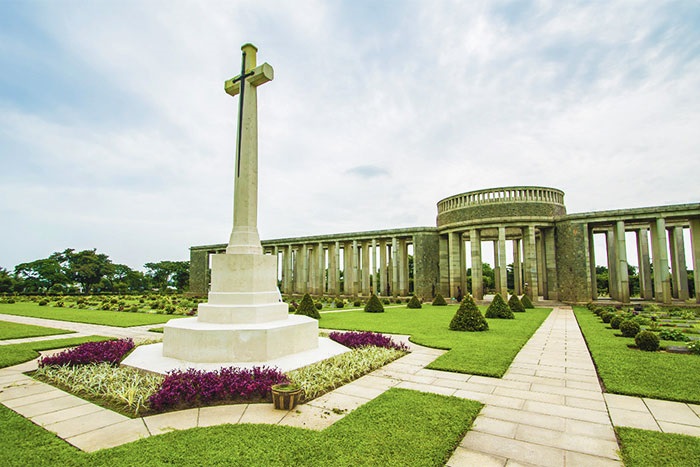
The Taukkyan War Cemetery stands as a poignant tribute to the memory of Allied soldiers who made the ultimate sacrifice during the tumultuous eras of World War. It serves as a final resting place for those who bravely fought, with World War II accounting for 6,374 graves, although only 5,576 of them bear identification. What makes this cemetery even more remarkable is Myanmar's unwavering honoring of not only the Japanese Imperial Fallen Soldiers but also the fallen soldiers from across the globe, driven by a profound humanitarian ethos. Established in 1951, the Taukkyan War Cemetery came into existence as a result of exhuming the remains of soldiers from four battlefield cemeteries in Akyab, Mandalay, Meiktila, and Sahmaw. Now, the Taukkyan War Cemetery's meticulously groomed grounds serve as a place of solemn reflection, where trimmed grass and fresh blooms offer a gentle welcome to all who enter its hallowed premises.
For visitors to Yangon, a journey to one of the best places in Yangon, just 12 miles north of Yangon's airport, is an imperative experience. It allows one to connect with the profound history of the prisoners and local civilian laborers who toiled diligently throughout the war, leaving behind an enduring testament to human endurance. A visit to the Taukkyan War Cemetery offers a profound opportunity to quietly pay homage to the courageous Allied soldiers who made the ultimate sacrifice, leaving an indelible mark on the pages of history. Let visit this highly recommended site, where you can pay your respects in a tranquil and reverent manner to the honorable Allied soldiers who are commemorated here. We recommend visiting during the morning or evening hours to escape the scorching sun and better absorb the weight of this historical place in Yangon.
These are the top 06 best places in Yangon that should be on your list when planning your visit. Depending on your available time and personal travel preferences, you can tailor your journey to explore these attractions. Wishing you a delightful and memorable journey to Yangon, Myanmar. Please CONTACT our travel consultant for more detailed information.
We suggest you refer to the following circuits:
>> Myanmar Packages Tours
>>Myanmar 10 days itinerary
>>Myanmar Travel itinerary 2 weeks
>> Myanmar Packages Tours
>>Myanmar 10 days itinerary
>>Myanmar Travel itinerary 2 weeks
Related travel guide
Other similar articles
CUSTOMIZABLE BY LOCAL EXPERTS
Personalized trip at the original price!
REFUND GUARANTEE
We believe in our work and promise to give you money back.
GOOD PRICE / QUALITY
95% satisfied more than expected!
24/7 LOCAL SUPPORT
We are always available online to provide assistance at any time.
Most read articles
Autour Asia is highly recommended on
Embracing the mission of "Satisfied more than expected" and providing authentic experiences, we have received numerous recommendations on reputable travel forums:






















